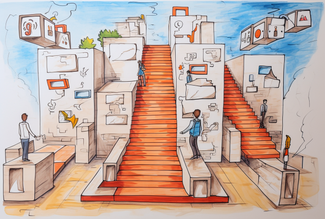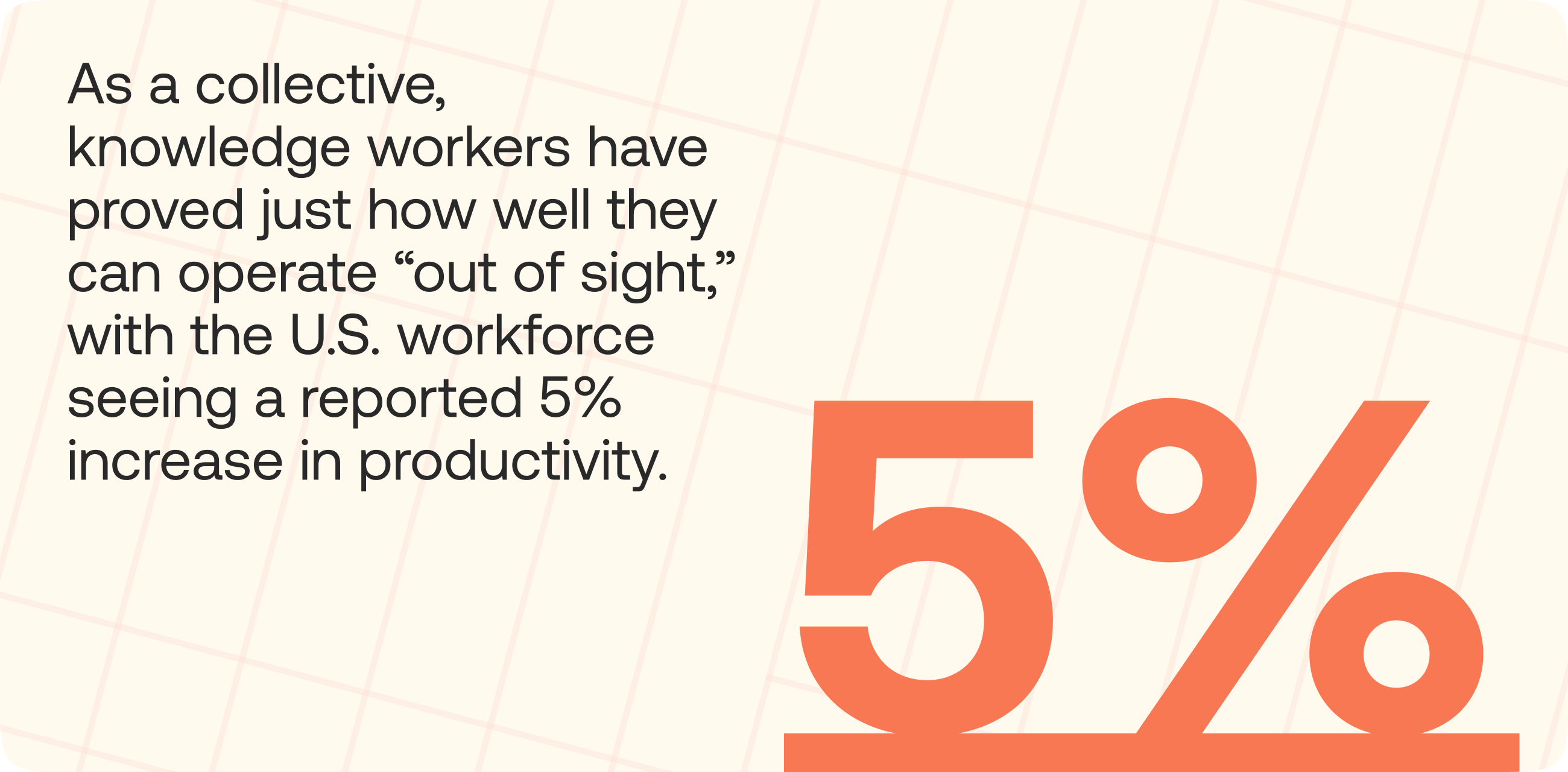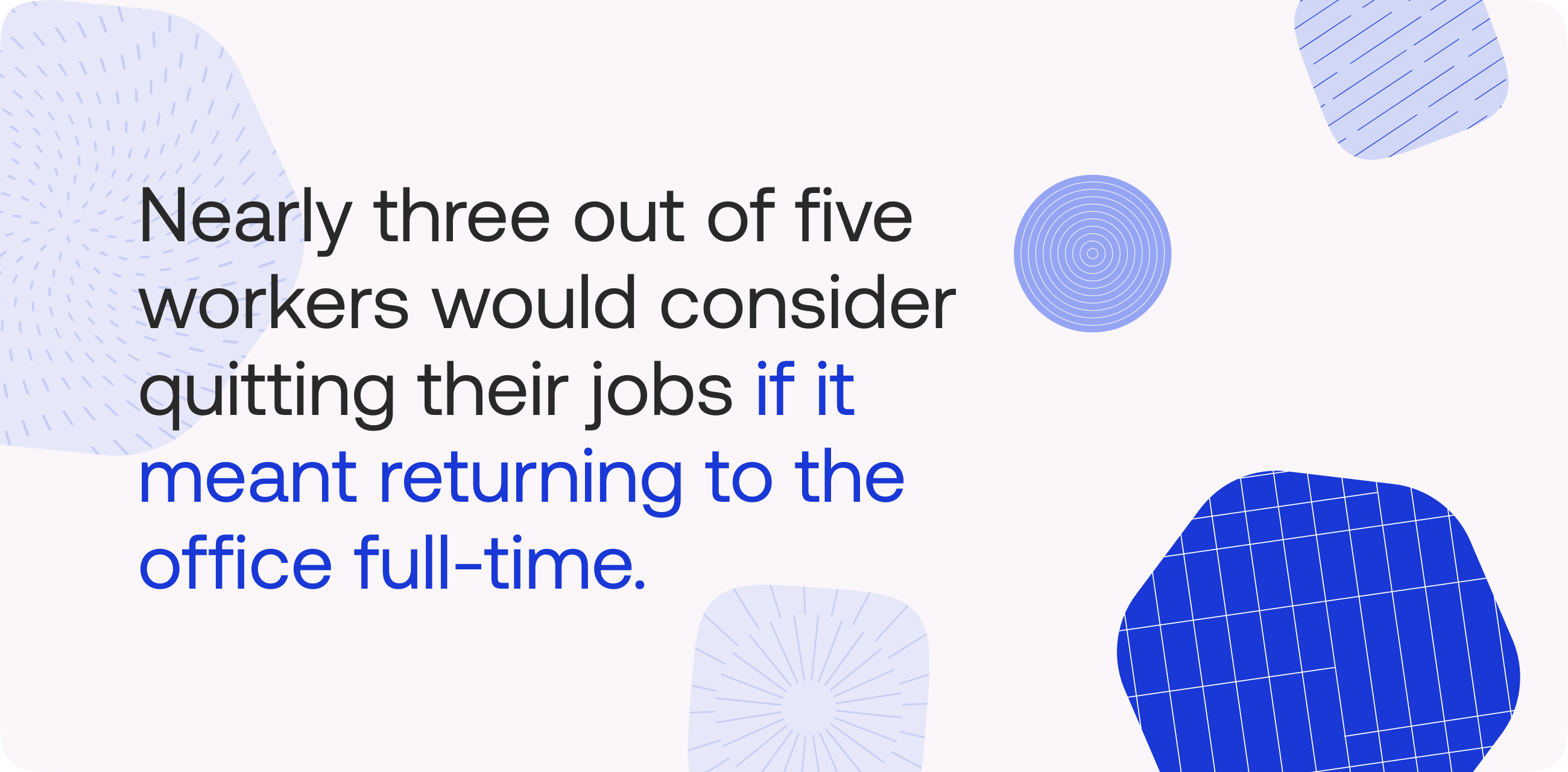
Autonomy is the key to employee engagement
“Out of sight out of mind” is a phrase that entirely negates the benefits of remote work, yet we see it time and time again in arguments concerning hybrid and remote models.
I think in the global shift to remote work, possibly the opposite was the case. On a personal level, I dove into my work because it was an activity that was available to me when everything else went into lockdown. As a collective, knowledge workers have proved just how well they can operate “out of sight,” with the U.S. workforce seeing a reported 5% increase in productivity.
This trend proves something we’ve known to be true for a while now – working in a traditional office setting is now the legacy model of work. For managers, this means embracing the cultural shift, trusting your team, and allowing employees to work during hours that make sense for them.
In other words, for a modern organization to thrive, its managers need to embrace employee autonomy at work.
Ditch strict supervision and rigid schedules
Autonomy, by definition, refers to the ability to govern oneself. Autonomy in the workplace does not mean employees do whatever they want, all the time, with no supervision – it means trusting employees to meet their responsibilities in a way in which they’re most productive.
Sure, this could mean you’ll see they’re away on Slack for a couple of hours on Monday morning, but it also means you might not see their active status while they are working later on Monday night – less tired, more focused, and producing higher quality deliverables for your company since they’re alert and distraction-free.
In other words, you will see the results of employee autonomy in the work that they produce.
Empowering employees with autonomy boils down to one reality: if employees are getting their work done, it really doesn’t matter when, how, or where they do it.
Employee monitoring or work from home monitoring softwares that track your employees’ minute-to-minute activities directly contradicts the trust remote organizations need to build into their culture.
Unfortunately, work is often associated with a rigidity that doesn’t apply to the way many people do their jobs anymore, resulting in a rise of employee monitoring software. Not everyone needs to work 8-5, Monday-Friday (and they don’t need to do so from the same office, either).
The solution? Don’t rush to conclusions or worriedly message employees if their peak productivity hours don’t fit into the traditional schedule. Simply let their work speak for itself. If there are clear patterns of slacking off or misalignment, that’s the time to course-correct. However, as a manager, it’s your job to set up your employees for success – and in 2021, that responsibility has been amended to include “wherever they might be working from.”
Autonomy and asynchronous work go hand in hand
Nearly three out of five workers would consider quitting their jobs if it meant returning to the office full-time. However, 35% of employees still want to go to the office at least some of the time, which has only strengthened the new standard of asynchronous communication while working.
And keep in mind – successful businesses have been communicating asynchronously for more than a hundred years. At an international company with offices around the globe, employees have to rely on their peers and fellow teams located around the world to complete the tasks for which they’re responsible to help the organization thrive.
Autonomous, asynchronous teams also display soft skills like discipline and accountability, and most of all, intrinsic motivation. Without the looming physical presence of their superiors, employees now operate with motivation from a place of passion and interest. These are all traits we ask our employees to possess, and in order to work asynchronously, they must display that sense of job autonomy.
Bringing trust into the picture
No organization can function without trust. Employees trust their company’s leaders for a sense of purpose and direction. In turn, employees are trusted to hit their goals and bring a passionate, innovative approach to work. Organizations with high levels of trust provide 3x the total return to shareholders than those with low trust.
Autonomous teams might use a project tracker and hold individuals accountable for updating their progress and providing resources for the team, for example.
Empower employees to take control
Your employees want to grow, and autonomy allows them to flex the muscles they need to do so. Autonomy helps employees master resourcefulness, time management, and goal setting for the projects they’re most interested in. Granting them autonomy is giving them free rein to help the company grow in the way they best see fit – and in doing so, fuel their own professional growth.
To help empower employees in this way, consider adopting a work hub that connects workers with the information and resources they need to operate autonomously. Features like the dynamic directory outline who’s responsible for what, which allows an inquisitive worker to reach out, connect with team members, and run with an idea.
Using autonomy as a driver for employee engagement
Employees who have autonomy don’t sit idly by as the workday progresses. Autonomous employees are self-driven and manager-resourced to work in a way that’s best for everyone – and that’s a huge boost for employee engagement. In fact, multiple studies show there’s a clear connection between these two ideas.
Autonomy and job satisfaction research
One of the most noteworthy pieces of research on autonomy and job satisfaction was conducted at the University of Birmingham, which found that there is indeed a connection between job satisfaction and workplace autonomy. A Gallup poll focused on the same topic aimed to quantify how much job dissatisfaction stemming from a lack of autonomy can cost an organization, which ended up being as high as $550 billion in lost productivity annually.
Now, these studies are a bit dated. But newer research backs up these findings as well. In a Qatalog study designed to understand what’s driving burn-out, the problem was broken down into two levels: knowledge and trust. To build a track record that builds trust, teams need a reliable management structure to confirm the power of autonomy. This means teams need visibility into each other’s productivity and results in addition to feeling valued enough to share ideas and feedback.
It’s clear that workplace autonomy is a data-backed way to increase worker productivity, happiness, and engagement. By providing employees with the resources they need to pursue their preferred working styles, you’ll be increasing the likelihood of high-quality outputs, strong retention rates, and more productivity – all from the comfort of your home, beach, office, café, or wherever you’ll thrive.





